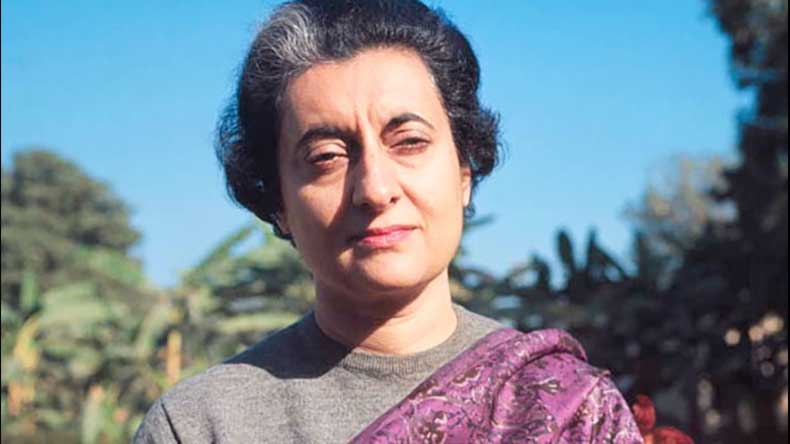Forty-five summers ago, a state of Internal Emergency was declared by the then Prime Minister, Indira Gandhi. On Friday, random thoughts crossed my mind, pertaining to certain significant happenings that preceded this controversial step. The month of June, perhaps, has changed the course of this country’s destiny more than any other calendar-month: It was on 23 June 1953, when Shyama Prasad Mukherjee, the founder of Bharatiya Jana Sangh, passed away in Srinagar, leaving behind a political entity that was ideologically diametrically opposite to the Congress. The BJP is the new avatar of this political thesis.
It was again on 23 June 1980 when Sanjay Gandhi, who was being groomed to take over the reins of the government by his mother, died in a plane crash, changing the political trajectory. Then again, on 23 June 1985, Air India Jumbo, “Kanishka”, was blown into bits near the coast of Ireland by Sikh militants, who planted a bomb at its embarking point in Montreal, killing all passengers and the crew.
It was on 12 June 1975, when Justice Jagmohan Lal Sinha of the Allahabad High Court, on a petition filed by socialist leader Raj Narain, delivered a historic judgement, unseating Indira Gandhi from Rae Bareli. It was a double-whammy for her since on the same day, her confidant, Durga Prasad Dhar, then posted as the Ambassador to the Soviet Union, prematurely breathed his last.
Indira Gandhi, who, in the 1971 general elections, had successfully vanquished the Grand Alliance comprising the Jana Sangh, Swatantra Party, the Socialists and the Congress (O), midway during her term, found herself besieged by a well-orchestrated agitation. The Nav Nirman Andolan, which had a year earlier stepped foot in Gujarat, and Bihar too, was undergoing an unprecedented upheaval, due to the agitation led by veteran leader, Jai Prakash Narayan. The RSS cadres were supporting the two movements, and evidently things were getting way beyond control.
The Prime Minister wanted to tender her resignation following the judgement, but Sanjay, and her supporters, implored her to explore the legal option, and go in for an appeal to the Apex Court against the High Court judgement, which to their mind, was aimed at removing her from office. Congress workers gathered in large numbers outside her residence at 1, Safdarjung Road, urging her to continue as PM. She was in the process of making up her mind, when Jai Prakash Narayan issued a clarion call to the uniformed forces to revolt and disobey the orders of the government. This set Indira in a panic-mode, with her ending up summoning West Bengal Chief Minister, Siddhartha Shankar Ray to seek legal advice.
Ray was a top constitutional expert, and suggested that an Internal Emergency could be announced, keeping in forefront the circumstances prevailing in the country. The notification was drafted by her principal secretary, P.N. Dhar, and after obtaining the consent of President Fakhruddin Ali Ahmed on the night of 25-26 June, a state of Emergency was proclaimed. The order was ratified by the Cabinet on the morning of 26 June.
The declaration led to the arrest of top opposition leaders and was accompanied by severe curtailments on the freedom of press. Power supply was switched off in newspaper offices on Bahadur Shah Zafar Marg, and only the Hindustan Times and the Statesman, saw the light of day since their premises were located in the Connaught Place area.
I have several vivid memories of the first day—no one was able to comprehend what was going on. Fear abounded, though it was only the political class that was targeted. Special one-page supplements of HT and Statesman furnished basic details of the government action.
I visited the university campus, where DUSU president, Arun Jaitley, was arrested while protesting near the main coffee house. My university seniors, Deepak Malhotra and Prem Swarup Nayyar rushed to the AICC office, then located at 5, Rajendra Prasad Marg, to find the sole figure of P.V. Narasimha Rao. Rao, a general secretary, was under surveillance for his close association with Lakshmikant Amma, an Andhra leader, who was part of the “Young Turks” quartet led by Chandra Shekhar, with Mohan Dharia and Krishan Kant being its other members. A petrified Rao told both Deepak and Prem to ignore any rumours or voice any opinion regarding the Emergency, while oddly, repetitiously peering under his desk!
The Emergency also saw the emergence of Subramanian Swamy as the new maverick politician from the Jana Sangh stable. It was a bewildering fact that he surreptitiously entered Parliament, signed the register, going on to perform a vanishing act. His mentor, Nanaji Deshmukh and senior leader, Kedar Nath Sahani also went underground, seeking temporary refuge in the basement of a Kailash Colony mansion, owned by an industrialist, who subsequently became a business partner of Colonel T. S. Anand, Sanjay Gandhi’s father-in-law.
Kamal Nath was amongst the few friends of Sanjay, who saw the unfolding drama from the PM’s abode. Nath was, thereafter, instructed by Indira Gandhi to relay a message to Jyoti Basu to assure him that he would not be arrested. Basu was in hiding at Amal Datta’s house in Calcutta, where Kamal Nath conveyed the directive.
There were reports of excesses, tarnishing the image of the ruling dispensation, with the Emergency remaining the darkest chapter of Indira Gandhi’s eventful tenure.
Her most notable insight was that the media should be allowed to perform its duty. Suppressing or throttling news, in the long run, can be counterproductive. Between us.

